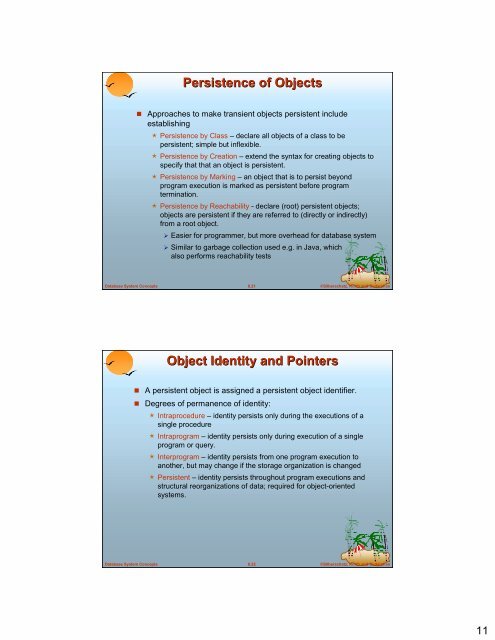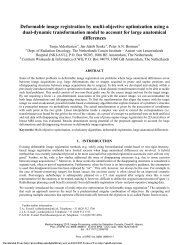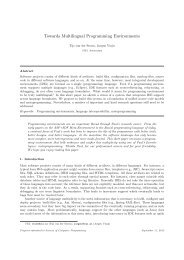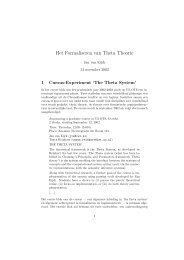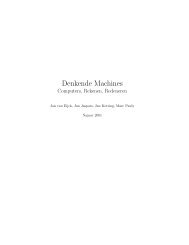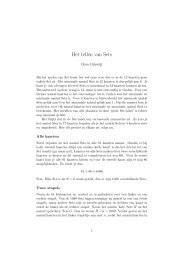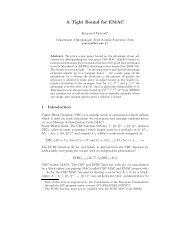Object-Oriented Databases Need for Complex Data Types - CWI
Object-Oriented Databases Need for Complex Data Types - CWI
Object-Oriented Databases Need for Complex Data Types - CWI
You also want an ePaper? Increase the reach of your titles
YUMPU automatically turns print PDFs into web optimized ePapers that Google loves.
<strong>Data</strong>base System Concepts<br />
<strong>Data</strong>base System Concepts<br />
Persistence of <strong>Object</strong>s<br />
Approaches to make transient objects persistent include<br />
establishing<br />
Persistence by Class – declare all objects of a class to be<br />
persistent; simple but inflexible.<br />
Persistence by Creation – extend the syntax <strong>for</strong> creating objects to<br />
specify that that an object is persistent.<br />
Persistence by Marking – an object that is to persist beyond<br />
program execution is marked as persistent be<strong>for</strong>e program<br />
termination.<br />
Persistence by Reachability - declare (root) persistent objects;<br />
objects are persistent if they are referred to (directly or indirectly)<br />
from a root object.<br />
Easier <strong>for</strong> programmer, but more overhead <strong>for</strong> database system<br />
Similar to garbage collection used e.g. in Java, which<br />
also per<strong>for</strong>ms reachability tests<br />
8.21<br />
<strong>Object</strong> Identity and Pointers<br />
8.22<br />
©Silberschatz, Korth and Sudarshan<br />
A persistent object is assigned a persistent object identifier.<br />
Degrees of permanence of identity:<br />
Intraprocedure – identity persists only during the executions of a<br />
single procedure<br />
Intraprogram – identity persists only during execution of a single<br />
program or query.<br />
Interprogram – identity persists from one program execution to<br />
another, but may change if the storage organization is changed<br />
Persistent – identity persists throughout program executions and<br />
structural reorganizations of data; required <strong>for</strong> object-oriented<br />
systems.<br />
©Silberschatz, Korth and Sudarshan<br />
11


